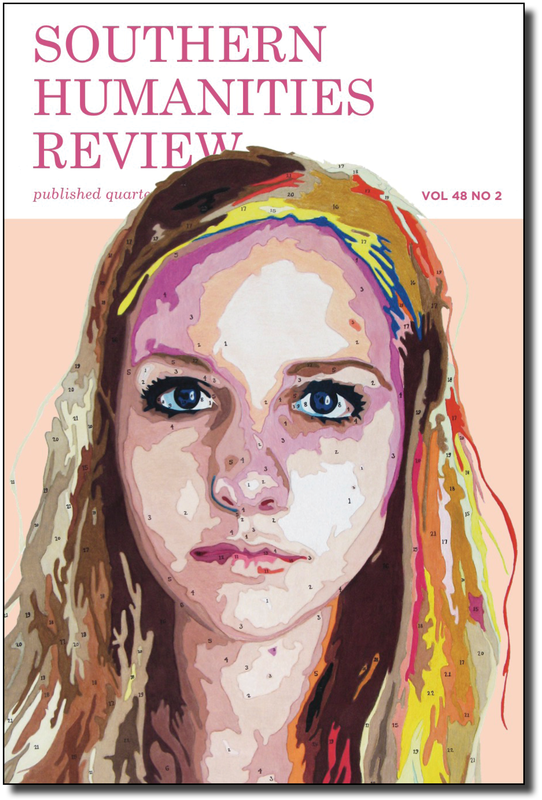|
Vertical Divider
It's early Sunday morning on a damp, chilly day in February. Spring has already started in Northern California. Against the slate gray sky, cherry and ornamental pear trees bloom pink and white, their petals scattered on the grass, wet from last night’s rain. Right now I could be snuggling under the comforter with my husband, who’s sleeping peacefully in our warm bed, sprawled on his back, snoring. So what am I doing thirty miles away, in Menlo Park, waiting in line to see Mary Magdalene’s tibia?
• • • When I read about the traveling tibia in the Hayward Daily Review earlier in the week, I put down my coffee cup and laughed out loud. Her tibia? Here from France? Touring the U.S.? I’ve always enjoyed the recondite and bizarre elements of Catholicism: flying nuns, levitating saints, miraculous artifacts, statues that walk, weep, wink, and talk. “She has a weird sense of humor,” one of my undergraduates wrote once in a student evaluation. It could be my weird sense of humor that’s brought me to the chapel in Menlo Park. Or my overdeveloped sense of curiosity. I’m not here because I’m devout, or even religious. I was raised Catholic in New Jersey—tepid, suburban Catholicism—but haven’t been to church in years, not even at Christmastime. I was never one of those girls who wanted to be a saint, or even a nun. Still, maybe I miss the uncritical faith of my childhood and secretly hope to revive it. Maybe I’m hoping to witness a miracle.
• • • My early fascination with saints is undoubtedly buried deep in my unconscious, with stories I read in the colorfully illustrated Lives of the Saints for children, and heard from the superstitious nuns who taught catechism classes at St. Catherine of Siena Church in Mountain Lakes, New Jersey. The nuns spoke in whispers about female saints and miracles. “They say that when they opened the tomb, her body was pure as snow and still perfectly preserved,” Sister Brigitte told a class of wide-eyed children. The boys in the back row stopped spitting spitballs. We looked at each other, and back at her, sitting up straighter in our metal folding chairs, enrapt. This was a lot more interesting than memorizing the Baltimore Catechism. Sunlight streamed through the modern stained-glass window, casting colored patterns on the scuffed tile floor. Sister Brigitte stood at the front of the small room, next to a dusty portable chalkboard, an otherworldly figure in her long, black habit and veil, her face framed by a white wimple, wide-eyed herself. “The room was filled with the smell of roses.”
The smell of roses is pretty universal in hagiography. Also the discovery of incorrupt bodies that have been entombed for centuries. Countless saints died to preserve their virginity and suffered excitingly lurid fates. Saint Agatha, who preserved her virginity despite being consigned to a brothel, cut off both of her breasts and died rolling over in hot coals. Saint Agnes, also sent to a whorehouse, was beheaded and burned. Saint Dymphna’s lecherous father beheaded her when she was fifteen years old. Saint Barbara was also decapitated by her father, who was immediately consumed by fire. Saint Wilhelmina repelled her unwelcome suitors by growing a beard. When a would-be suitor admired Saint Lucy’s eyes, she gouged them out with a fork. I remember the children’s primer of saints, its yellow-orange cover crowded with angels and thronged with male saints, the virgin martyrs hovering in the background, robed in white. It was the women, especially the girls, who interested me in my childhood and early adolescence. In the cheesy illustration of Saint Lucy, she wore pastel blue robes and a crown of pink roses, with a definite hint of mascara, rouge, and pink lipstick. Gaze directed heavenward, she looked like a supercilious teenager pretending piety. Lucy still had her eyes, but also held two round eyeballs aloft in what appeared to be a golden martini glass. Saint Cecilia looked like a sappy middle schooler, smirking as she strummed her harp. Saint Rita and Saint Rose of Lima and Saint Catherine of Siena all wore crowns of thorns, and Saint Catherine (of particular interest because of the name of our church) bore stigmata like Christ’s on her hands clasped in prayer. While we snickered at the pamphlets on sex education in the vestibule of the church (“The Virgin Mother as Model,” “Preserving Your Purity,” “Necking: How Far is Too Far?”), preadolescent Catholic girls in the late nineteen-fifties squirmed with masochistic delight as we pored over pictures of virgin martyrs and read of their joyful suffering. READ THE REST OF THIS ESSAY IN VOL 48.2JACQUELINE DOYLE lives in the San Francisco Bay Area, where she teaches at California State University, East Bay. Her creative nonfiction has appeared in South Dakota Review, New Plains Review, Women's Studies, Jabberwock Review, Southern Indiana Review, and South Loop Review. Her essay "The Tyranny of Things" was listed as notable in Best American Essays 2013.
|
VOLUME 48.2
|
CURRENT ISSUE
|
CONTACT
|
DEPARTMENT OF ENGLISH
|


